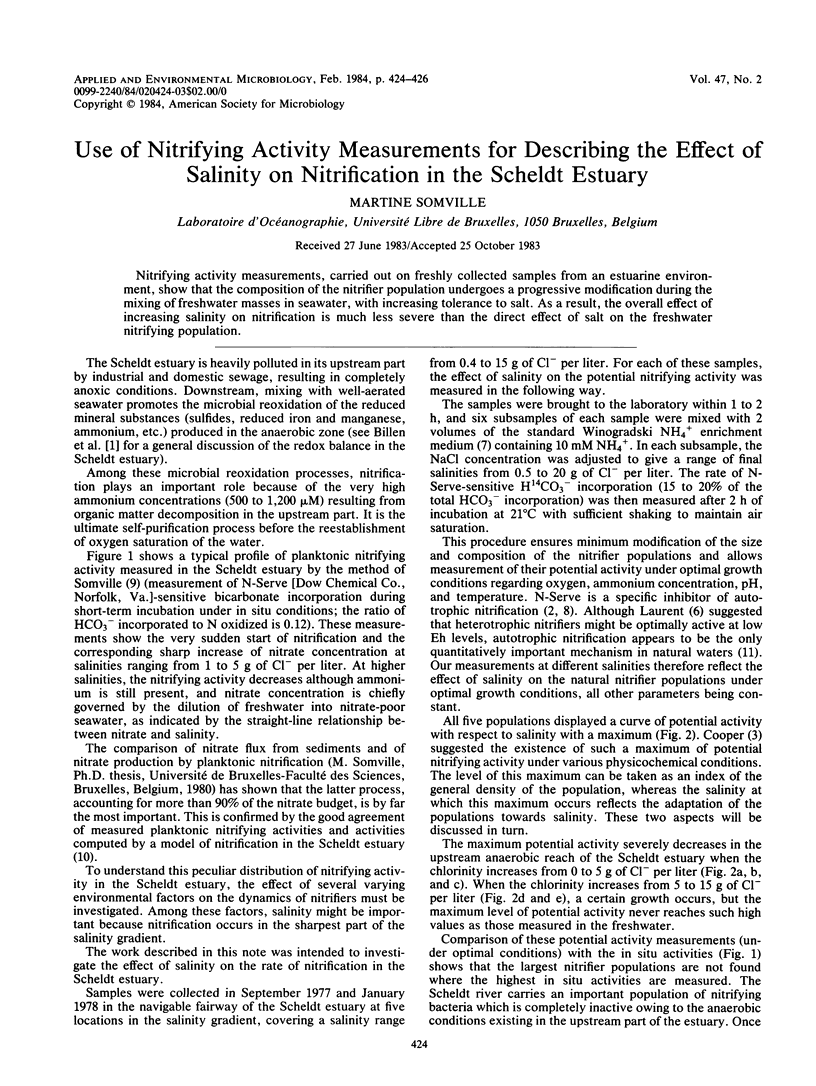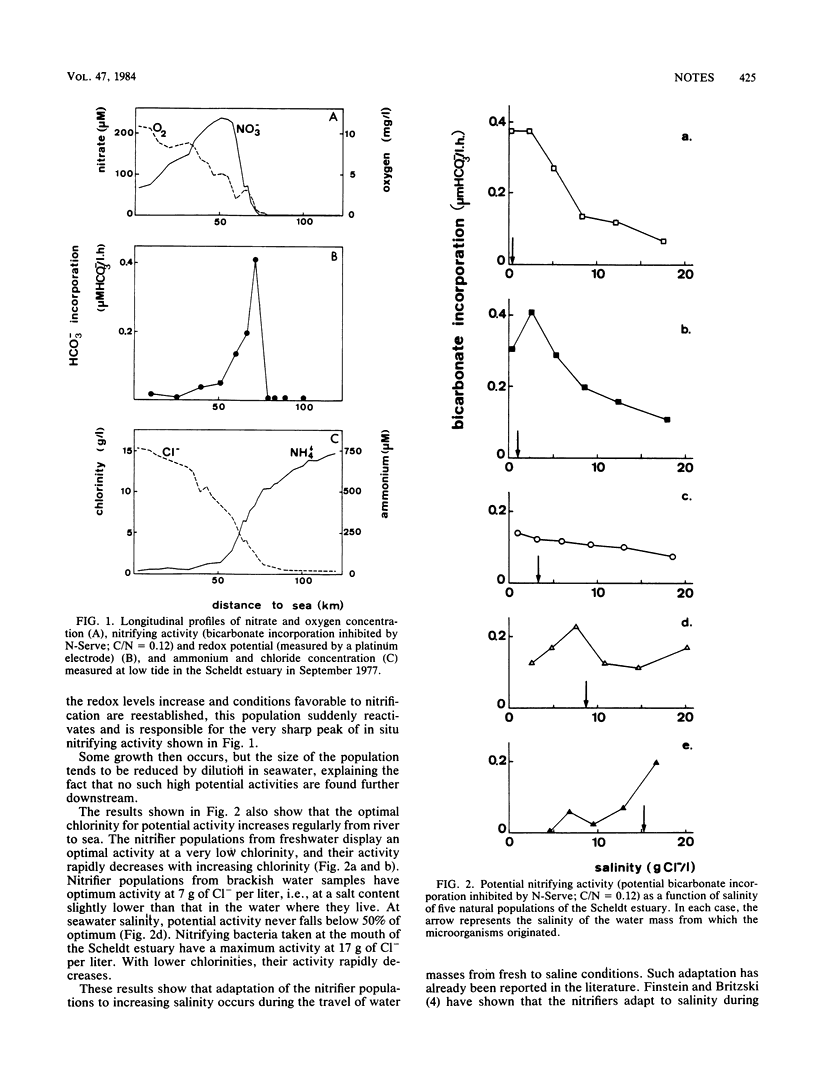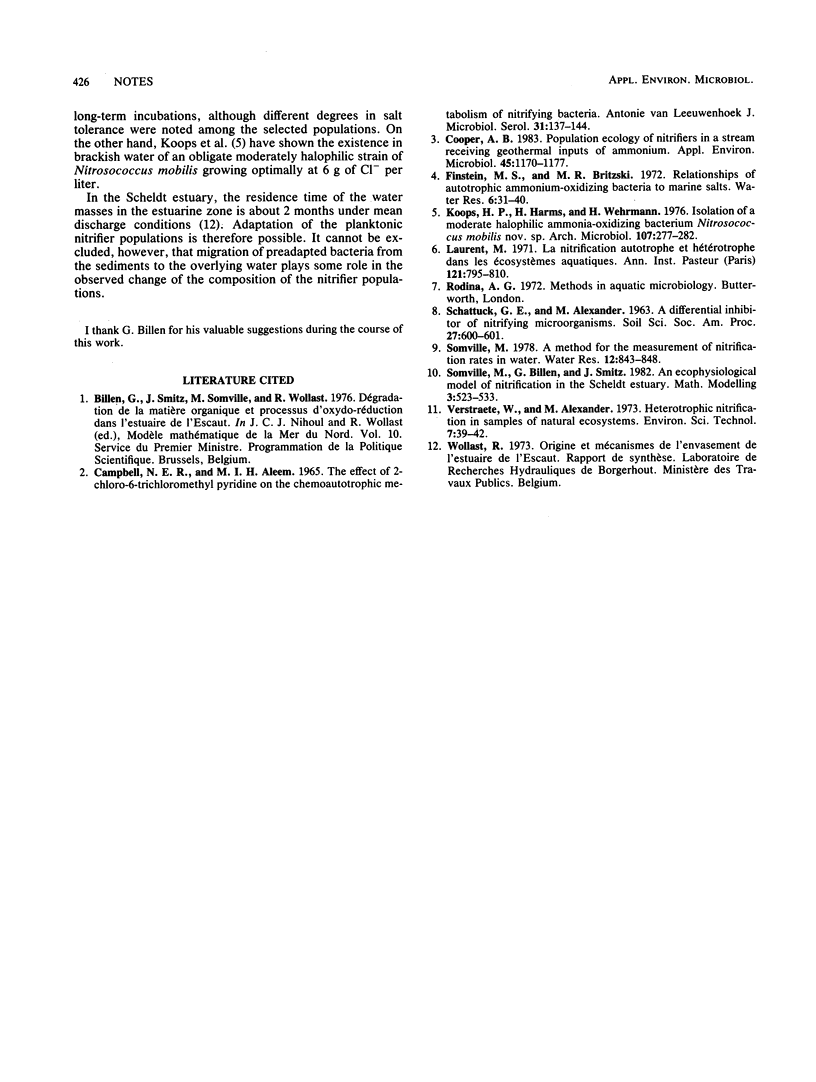Abstract
Nitrifying activity measurements, carried out on freshly collected samples from an estuarine environment, show that the composition of the nitrifier population undergoes a progressive modification during the mixing of freshwater masses in seawater, with increasing tolerance to salt. As a result, the overall effect of increasing salinity on nitrification is much less severe than the direct effect of salt on the freshwater nitrifying population.
Full text
PDF


Selected References
These references are in PubMed. This may not be the complete list of references from this article.
- CAMPBELL N. E., ALEEM M. I. THE EFFECT OF 2-CHLORO, 6-(TRICHLOROMETHYL) PYRIDINE ON THE CHEMOAUTOTROPHIC METABOLISM OF NITRIFYING BACTERIA. II. NITRITE OXIDATION BY NITROBACTER. Antonie Van Leeuwenhoek. 1965;31:137–144. doi: 10.1007/BF02045883. [DOI] [PubMed] [Google Scholar]
- Cooper A. B. Population ecology of nitrifiers in a stream receiving geothermal inputs of ammonium. Appl Environ Microbiol. 1983 Apr;45(4):1170–1177. doi: 10.1128/aem.45.4.1170-1177.1983. [DOI] [PMC free article] [PubMed] [Google Scholar]
- Koops H. P., Harms H., Wehrmann H. Isolation of a moderate halophilic ammonia-oxidizing bacterium, Nitrosococcus mobilis nov. sp. Arch Microbiol. 1976 Apr 1;107(3):277–282. doi: 10.1007/BF00425339. [DOI] [PubMed] [Google Scholar]
- Laurent M. La nitrification autotrophe et hétérotrophe dans les écosystèmes aquatiques. Ann Inst Pasteur (Paris) 1971 Dec;121(6):795–810. [PubMed] [Google Scholar]


